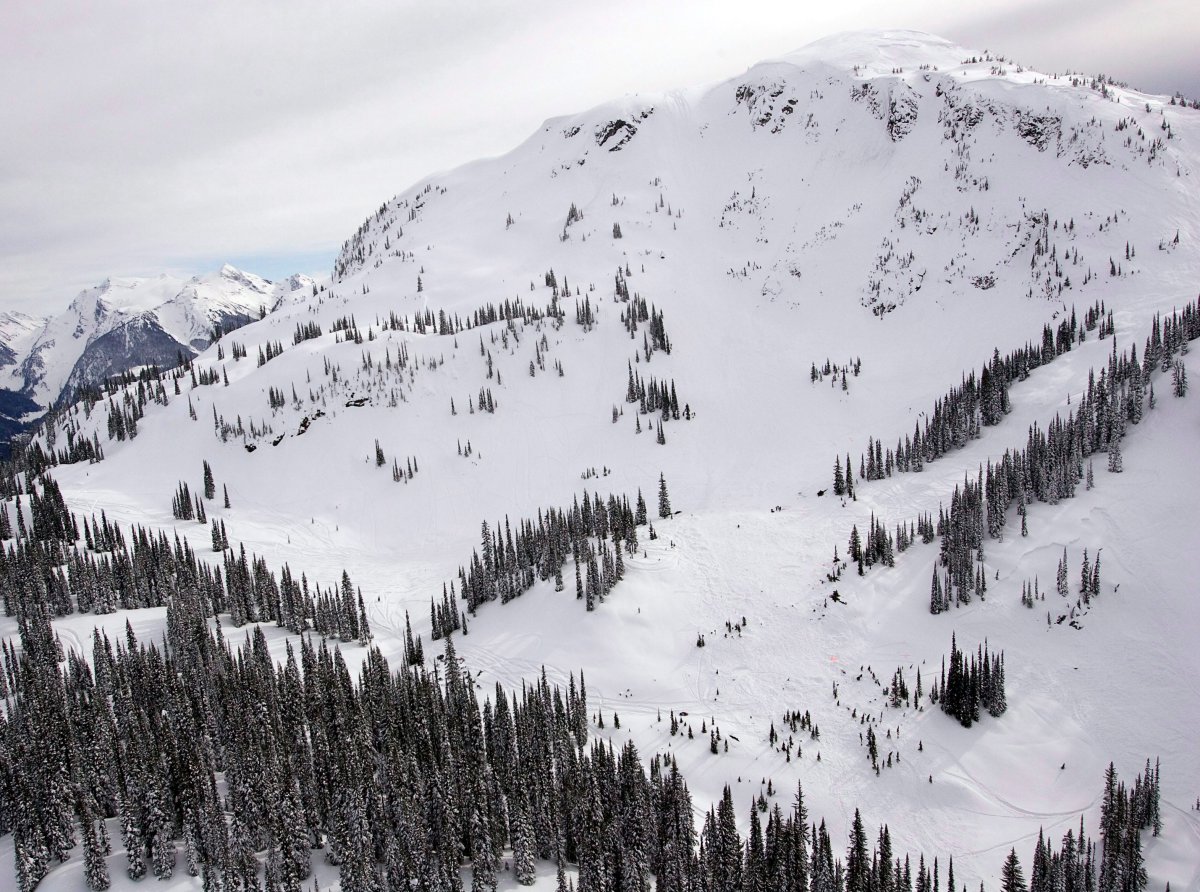Five snowshoers are dead after a snow ledge collapsed from under the group Sunday, creating a 500-metre long avalanche on a mountain north of Vancouver.

READ MORE: Fifth body recovered in snow slide near Lions Bay, B.C.
Here are five things to know about avalanches:
1. THERE ARE TWO BASIC TYPES
Parks Canada says there are two basic types of avalanche: loose snow avalanches and slab avalanches. Loose snow avalanches originate from a single point and gather more snow as they go down a slope. Slab avalanches, on the other hand, happen when a large area of snow begins to slide all at once down a mountainside.
2. THEY DON’T JUST HAPPEN ON STEEP INCLINES
Avalanches can happen on slopes as shallow as 15 degrees, according to Parks Canada, which notes that even small avalanches can shove people over a cliff or into a crevasse on a glacier.
3. THEY CAN BE TRIGGERED BY PEOPLE
While many avalanches are caused by people, it’s not possible to start an avalanche with a loud noise — in spite of cartoons that suggest otherwise. Pascal Haegli, Simon Fraser University’s research chair in avalanche risk management, said human-triggered avalanches happen when people disturb different layers of snow. He spoke to The Canadian Press after a similar incident last year. He said that if a thin layer of icy snow sitting on top of more loose snow is disturbed, it can cause all the snow to tumble down.
4. ONCE YOU’VE BEEN BURIED, IT’S HARD TO GET OUT
Haegli says that it’s almost impossible for people to dig themselves out of an avalanche once they’ve been buried. The snow is heavy, so it’s especially difficult to get out without proper equipment. “Once the avalanche comes to a stop, it sets like concrete, very quickly,” he said. “It’s not the fluffy powder snow you have in mind.” Everyone travelling where avalanches are possible should carry a transceiver with them, which send out a radio signal. If an avalanche happens, those not buried switch their transceiver to search mode and follow the signal toward a buried person.
5. MOST CANADIANS KILLED IN AVALANCHES ARE SNOWMOBILERS
According to Avalanche Canada, in 2016, 15 people died in recreational avalanche accidents. Of those, 12 were snowmobilers. Over the past five years, 24 of the 45 people killed in recreational avalanche accidents were snowmobiling at the time. Two-thirds of the victims were from Alberta.
SOURCES: The Canadian Press, Parks Canada, Avalanche Canada





Comments